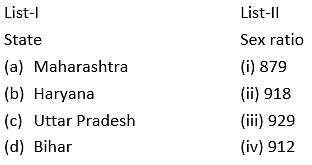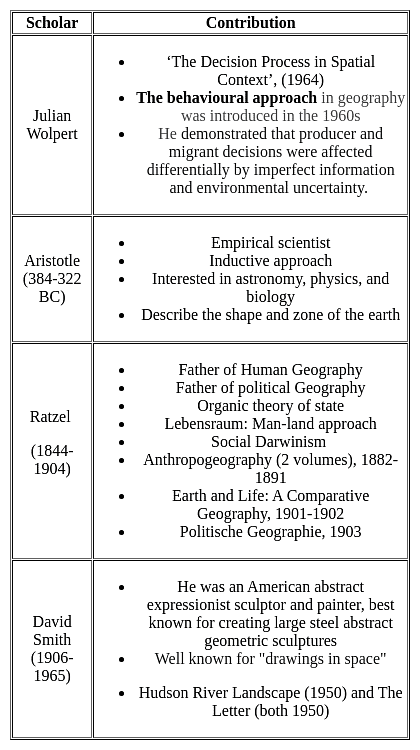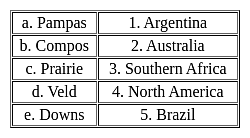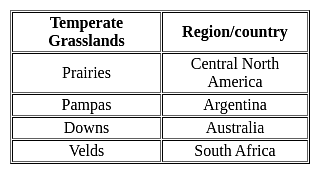APSET Paper 2 Mock Test - 7 (Geography) - AP TET MCQ
30 Questions MCQ Test - APSET Paper 2 Mock Test - 7 (Geography)
Which one of the following pairs is NOT matched correctly?
Who conceptualized electromagnetic radiation as an electromagnetic wave that travels through space at the speed of light?
| 1 Crore+ students have signed up on EduRev. Have you? Download the App |
Which is the lowest layer of the atmosphere?
Given below are the two statements, one labelled as Assertion (A) and the other labelled as Reason (R). Select your answer from the code given below :
Assertion (A) : According, to Lee’s migration model, metropolitan areas are centers for immigration.
Reason (R) : The metropolitan areas have pull factors.
Code :
Census data released on july 15,2011 reflects that 13.48 percent urban population lives in
Assertion(A)- Exogenous processes are responsible for gradation.
Reason(R)- Weathering and erosion is often described as the essential phase in the denudation process of landscapes.
Choose the correct option:
Consider the following statements:
1. India has become the largest producer of sugar.
2. Karnataka is the largest producer of coconut in India.
3. India has also become the second largest exporter of sugar after Brazil.
4. The highest amount of millet is produced by Rajasthan.
How many of the statements given above are correct?
Which of the following States is least developed in rail routes?
Assertion(A)- Fogs, urban smog’s, frost generally affect the economy.
Reason(R)- Inversion of temperature is known as the negative lapse rate.
Choose the correct options.
Consider the following factors with respect to the temperature of a place:
1. Distance from the sea.
2. Latitude and altitude.
3. Air mass and ocean currents.
Which of the above affect the temperature of a place?Match the List-I with List-II

Choose the correct option:
Consider the following statements-
1. These winds blow from the subtropical high-pressure belts towards the sub-polar low-pressure belts.
2. They are stronger in the southern hemisphere.
3. These winds are best developed between 40° and 65°S latitudes.
Statements given-above are about which planetary wind?
A rise in sea level near shore due to strong winds is called
a. Generally results from the presence of joints and fractures
b. The arrangement of the channels is such that the principal tributary streams are parallel and very long.
c. Common in areas with parallel fractures or faults.
d. Characterised by right-angle bends.
Which of the above statements are correct?
The average air pressure at the sea level is ……………… millibars
Determine the functions of GIS from the options given below.
(A) Data Capture
(B) Data Storage and Manipulation
(C) Data Analysis
(D) Data presentation
Choose the correct answer from the options given below:Assertion(A)- Green Revolution has a lot of drawbacks and several imbalances.
Reason(R)- Green revolution in India only brought about a Grain Revolution.
Choose the correct option:
Assertion (A)- The forest resources are unevenly distributed in India.
Reason(R)- Forest cover must be kept in check regularly.
Choose the correct option:
The Siberian Crane, an endangered migratory bird is a regular visitor of which of the following national park/bird sanctuaries:






















